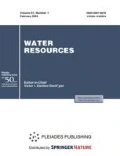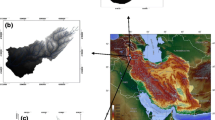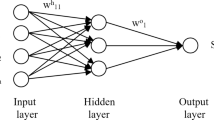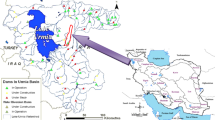Abstract
Although the Volterra models are non-parsimonious ones, they are being used because they can mimic dynamics of complex systems. However, applying and identification of the Volterra models using data may result in overfitting problem and uncertainty. In this investigation we evaluate capability of different wavelet forms for decomposing and compressing the Volterra kernels in order to overcome this problem by reducing the number of the model coefficients to be estimated and generating smooth kernels. A simulation study on a rainfall−runoff process over the Cache River watershed showed that the method performance is successful due to multi-resolution capacity of the wavelet analysis and high capability of the Volterra model. The results also revealed that db2 and sym2 wavelets have the same high potential in improving the linear Volterra model performance. However, QS wavelet was more successful in yielding smooth kernels. Moreover, the probability of overfitting while identifying the nonlinear Volterra model may be less than the linear model.
Similar content being viewed by others
References
Chang, F.J., Chang, L.C., and Wang, Y.S, Enforeced selforganizing map neural networks for river flood forecasting, Hydrol. Process., 2007, vol. 21, pp. 741–749.
Chou, C.M, Efficient nonlinear modeling of rainfallrunoff process using wavelet compression, J. Hydrol., 2007, vol. 332, pp. 442–455.
Chou, C.M. and Wang, R.Y., On-line estimation of unit hydrographs using the wavelet-based LMS algorithm, Hydrol. Sci. J., 2002, vol. 47, no. 5, pp. 721–738.
Diskin, M.H. and Boneh, A, Determination of optimal kernels for second order stationary surface runoff systems, Water Resour. Res., 1973, vol. 9, no. 2, pp. 311–325.
Goulart, J.H.M. and Burt, P.M.S, Efficient kernel computation for Volterra filter structure evaluation, Signal Process. Lett., 2012, vol. 19, no. 3, pp. 135–138.
Kamruzzaman, M., Metcalfe, A., and Beecham, S, Wavelet based rainfall-stream flow models for the South-East Murray Darling Basin, J. Hydrol. Eng., 2014, vol. 19, no. 7, pp. 1283–1293.
Labat, D., Ababou, R., and Mangin, A, Linear and nonlinear input/output models for karstic springflow and flood prediction at different time scales, Stochastic Environ. Res. Risk Assess., 1999, vol. 13, pp. 337–364.
Lattermann, A., System-Theoretical Modeling in Surface Water Hydrology, Germany: Springer,1991, p. 200.
Maheswaran, R. and Khosa, R., Wavelet–Volterra coupled model for monthly stream flow forecasting, J. Hydrol., 2012a, vols. 450–451, pp. 320–335.
Maheswaran, R. and Khosa, R, Comparative study of different wavelets for hydrologic forecasting, Comput. Geosci., 2012b, vol. 46, pp. 284–295.
Muftuoglu, R.F, Monthly runoff generation by nonlinear models, J. Hydrol., 1991, vol. 125, pp. 277–291.
Napiorkowski, J.J, Application of Volterra series to modeling of rainfall-runoff systems and flow in open channels, Hydrol. Sci. J., 1986, vol. 31, nos. 2, 6, pp. 187–203.
Napiórkowski, J.J. and Kundzewicz, Z.W., A discrete conceptualization of a Volterra series model for surface runoff, Water Resour. Res., 1986, vol. 22, no. 10, pp. 1413–1421.
Napiórkowski, J.J. and Piotrowski, A, Artificial neural networks as an alternative to the volterra series in rainfall-runoff modeling, Acta Geophys. Pol., 2005, vol. 53, no. 4, pp. 459–472.
Napiórkowski, J.J. and Strupczewski, W.G, Problems involved in identification of the kernels of Volterra series, Acta Geophys. Pol., 1984, vol. XXXII, no. 4, pp. 375–391.
Nikolaou, M. and Mantha, D, Efficient nonlinear modeling using wavelet compression, Progress in Systems and Control Theory, 2000, vol. 26, pp. 313–334.
Papazafiriou, Z.G, Linear and nonlinear approaches for short-term runoff estimations in time invariant open hydrologic systems, J. Hydrol., 1976, vol. 30, pp. 63–80.
Author information
Authors and Affiliations
Corresponding author
Additional information
The article is published in the original.
Rights and permissions
About this article
Cite this article
Kashani, M.H., Ghorbani, M.A., Dinpasho, Y. et al. Comparative study of different wavelets for developing parsimonious Volterra model for rainfall-runoff simulation. Water Resour 44, 568–578 (2017). https://doi.org/10.1134/S009780781704008X
Received:
Published:
Issue Date:
DOI: https://doi.org/10.1134/S009780781704008X




